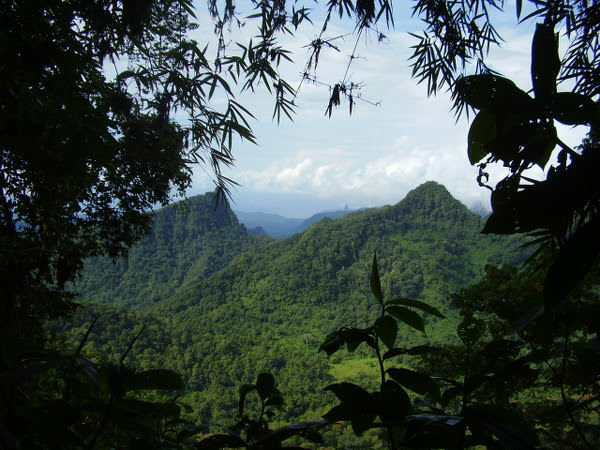Islands contribute enormously to global biodiversity, but are threatened by human activities. To understand why some islands have had a greater impact since humans first settled on them than others, a new study compared environmental and social variables from 30 islands in the East Atlantic Ocean.
The study, now published in the scientific journal anthropocene, shows that terrain accessibility explains most of the differences between islands in native vegetation cover, while current human population density had a negligible correlation, suggesting that topography constrains human impacts on biodiversity.
human impacts on hotspots of biodiversity
Currently, the islands' species and ecosystems are highly threatened by human activities, often confined to small areas of remnant vegetation.
The human impact is not just happening today, it started several centuries – and, in some cases, millennia – when humans first settled on these previously uninhabited islands, removing the cover of native vegetation to initiate agricultural practices, hunting species to extinction and introducing exotic species.
But why are some islands more affected than others by human activity?
To answer this question, an international research team studied 30 islands in five archipelagos in the Atlantic Ocean: Azores, Madeira, Canary Islands, Cape Verde and Islands of the Gulf of Guinea.
Researchers developed a statistical analysis of several variables related to the topography, climate, human activities and demography of these islands.
“Our results show that islands with a relatively large extent of native ecosystems generally have a more rugged topography, suggesting that biodiversity on islands with inaccessible landscapes is protected from human activities,” explains Sietze Norder, first author of the study, investigator in the Center for Ecology, Evolution and Environmental Change – cE3c (Faculty of Sciences of the University of Lisbon) and on University of Amsterdam (Holland).
interdisciplinary approach
While topography appears to play an important role, modern patterns of native vegetation may also partially reflect demographic changes and socioeconomic trends since humans first settled on these islands.
Thus, the research team gathered data to reconstruct the historical demographic and socioeconomic changes in these archipelagos over the past few centuries. This historical information (qualitative data) was used to contextualize the statistical results (quantitative data).
Previous studies, which relied solely on qualitative or quantitative approaches, have sometimes reached contrasting conclusions about the relative importance of environmental and social factors for changes in vegetation cover.
“Our study shows that interdisciplinary approaches, which integrate quantitative and qualitative information, have great potential to improve our understanding of the interactions between man and the environment,” adds Sietze Norder.
Like the islands of the East Atlantic, islands around the world have been largely transformed by human activities. Human impacts are not restricted to the removal of native vegetation but also include other changes, such as the introduction of exotic species, the extinction of species that only existed on these islands and abiotic aspects, such as soil erosion.
“Instead of recording just these changes on individual islands, the next step is to assess for different regions of the world how and why human impacts on biodiversity differ”, concludes the researcher.
Article reference:
Norder SJ et al., 'Global change in microcosms: environmental and societal predictors of land cover change in the Atlantic Ocean Islands', anthropocene (April 2020).https://doi.org/10.1016/j.ancene.2020.100242
Author Communication Office of the Center for Ecology, Evolution and Environmental Change – cE3c (Faculty of Sciences of the University of Lisbon)
Science in the Regional Press – Ciência Viva



















Comments